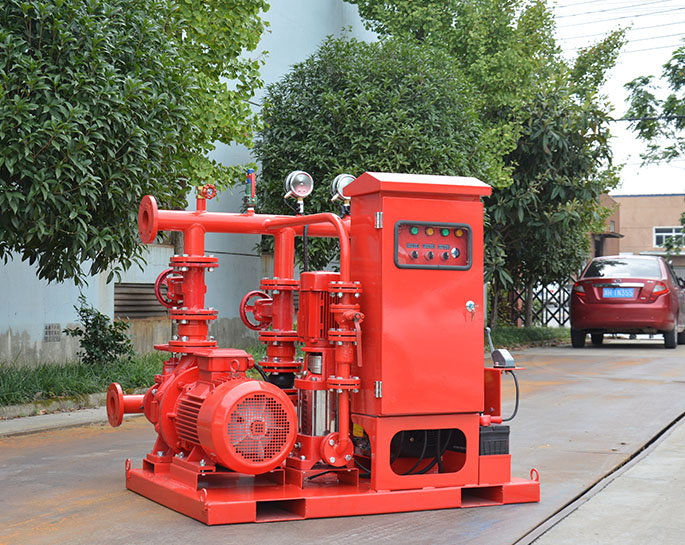The reason why the fire pump cannot absorb water
If a fire pump is unable to absorb water, it can significantly impair the effectiveness of the entire fire protection system. Several reasons could contribute to this issue:
-
Air Lock or Air Binding: Air trapped in the suction piping or pump casing can prevent the pump from priming and drawing in water. This can happen during system startup or after maintenance if air is not properly vented from the system.
-
Suction Piping Issues: If the suction piping is not designed or installed correctly, it can cause problems like inadequate flow or air pockets that prevent water from reaching the pump. Piping should be sized appropriately, free from obstructions, and equipped with proper fittings.
-
Insufficient Water Supply: If the water source, such as a tank, reservoir, or water supply line, doesn't have enough water or is unable to provide adequate pressure, the fire pump might not be able to draw water effectively.
-
Clogged or Blocked Suction Strainer: A clogged or blocked suction strainer or screen can prevent water from entering the pump. Regular cleaning and maintenance of the strainer are essential.
-
Suction Lift Too High: If the fire pump's suction lift (vertical distance from the water source to the pump) is too high, it can lead to difficulties in priming and water absorption.
-
Priming System Failure: Fire pumps often require a priming system to ensure that air is evacuated from the suction line. If the priming system is malfunctioning or not properly used, it can lead to difficulty in water absorption.
-
Loss of Water Seal: Some fire pump systems utilize a water seal to prevent air from entering the pump. If this seal is lost due to leakage or incorrect installation, air can enter the pump casing, preventing water absorption.
-
Suction Valve Closed: If the suction valve on the fire pump or within the piping system is closed or partially closed, it will obstruct water flow into the pump.
-
Piping Leaks: Leaks in the suction piping can create a loss of pressure and result in air being drawn into the system instead of water.
-
Cavitation: If the pressure at the pump inlet drops too low due to a high demand for water, the water can vaporize and create bubbles, leading to cavitation. This disrupts water flow and can prevent water absorption.
-
Pump Mechanical Issues: Mechanical problems with the pump, such as damaged impellers or bearings, can reduce its ability to create suction and draw in water.
-
Improper Sealing: Gaskets, seals, and joints in the pump and piping should be properly sealed to prevent air leaks that could inhibit water absorption.
-
Valve Misalignment: If the piping and valves leading to the pump are not aligned correctly, it can hinder the flow of water.
-
Electrical or Control Issues: Problems with the pump's electrical components or control system could prevent it from starting or operating properly.
Addressing these issues often requires a combination of troubleshooting, maintenance, and potentially consulting with experts in fire pump systems. Regular testing, inspection, and maintenance are critical to ensuring that the fire pump is ready to operate effectively in case of an emergency.


.png)
.png)

.png)


